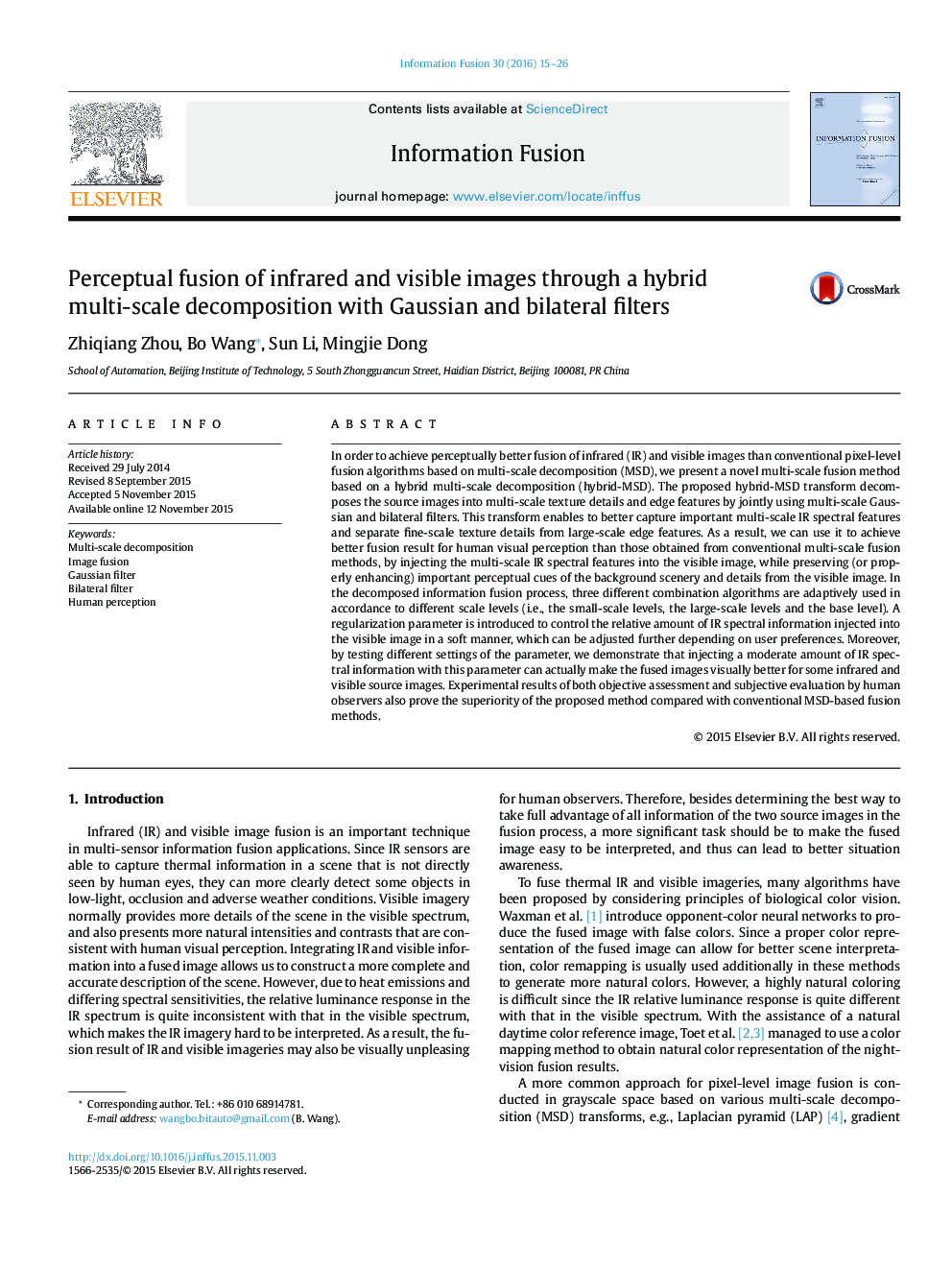| Article ID | Journal | Published Year | Pages | File Type |
|---|---|---|---|---|
| 528021 | Information Fusion | 2016 | 12 Pages |
•Multi-scale texture details and edge features are obtained by the hybrid-MSD.•IR spectral features are injected into the visible image by an asymmetrical scheme.•Different combination algorithms are used adaptively according to different scales.•Important perceptual cues from the visible image are well preserved or enhanced.
In order to achieve perceptually better fusion of infrared (IR) and visible images than conventional pixel-level fusion algorithms based on multi-scale decomposition (MSD), we present a novel multi-scale fusion method based on a hybrid multi-scale decomposition (hybrid-MSD). The proposed hybrid-MSD transform decomposes the source images into multi-scale texture details and edge features by jointly using multi-scale Gaussian and bilateral filters. This transform enables to better capture important multi-scale IR spectral features and separate fine-scale texture details from large-scale edge features. As a result, we can use it to achieve better fusion result for human visual perception than those obtained from conventional multi-scale fusion methods, by injecting the multi-scale IR spectral features into the visible image, while preserving (or properly enhancing) important perceptual cues of the background scenery and details from the visible image. In the decomposed information fusion process, three different combination algorithms are adaptively used in accordance to different scale levels (i.e., the small-scale levels, the large-scale levels and the base level). A regularization parameter is introduced to control the relative amount of IR spectral information injected into the visible image in a soft manner, which can be adjusted further depending on user preferences. Moreover, by testing different settings of the parameter, we demonstrate that injecting a moderate amount of IR spectral information with this parameter can actually make the fused images visually better for some infrared and visible source images. Experimental results of both objective assessment and subjective evaluation by human observers also prove the superiority of the proposed method compared with conventional MSD-based fusion methods.
